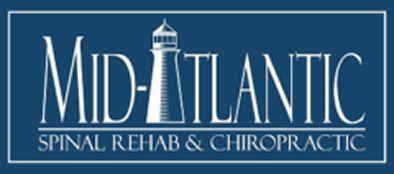ICD-10 Coding for Baltimore Auto Accident Injuries
Since approximately 1979 the health care providers in the United States have been using a series of 4 and 5 digit codes to represent our diagnoses for patients. This code base is called ICD-9, which stands for International Classification of Disease, 9th edition. For example, I may diagnosis a sprained neck as 847.0 cervical sprain/strain. While it is fairly fast and easy for Chiropractors such as myself to code with just four digits, it is not entirely accurate. That is, if someone sprains the zygapophyseal joints in their neck following a Baltimore auto accident, why should it be coded with the same codes 847.0 that also reflects a strained upper trapezius muscle? The problem with the “old way” of coding for health care was that one code pointed to many different conditions. And then, there’s the problem of “sidedness”. If someone were to sprain their right shoulder (840.9) or their left shoulder (840.9) there would be no way based on the numbering scheme to know which side was actually injured.
That’s where ICD-10 comes in. With the exception of the United States, the rest of the world has already moved on from ICD-9 and has implemented and been using ICD-10 diagnoses for years. Much like our desire to avoid the metric system, the U.S. has been burying its proverbial head in the sand and has only JUST NOW decided to implement a transition to ICD-10 coding. As of October 1, 2015 (approximately 16 days away as of the time of the writing of this blog post) all new diagnoses for patients need to be coded in ICD-10 rather than ICD-9. Let’s take a look at some of the perils of this “instant transition.”
Hypothetically I could be treating a patient on September 30, 2015 and I can diagnose them with a cervical segmental dysfunction (739.1). If they return for treatment the following day on October 1, 2015 that same person with the same diagnosis is now considered to have a “segmental and somatic dysfunction of the cervical spine” (M99.01). That’s not too bad…
Let’s look at the cervical sprain/strain example from above. If that patient presents for an evaluation on or before September 30, 2015 their diagnosis would be 847.0. However, should they present on or after October 1, 2015, their diagnosis is now “Sprain of ligaments of cervical spine (S13.4xxA) (initial encounter) with strain of muscle, fascia, and tendon at neck level (S16.1xxA) (initial encounter)”. While it does make the diagnosis more specific, where one disease process is mapped to one code, it makes coding as a whole more difficult.
As far as the sidedness argument. If a patient comes in and sprains both shoulders in a Baltimore auto accident on September 30, 2015, then they will be diagnosed with 840.9. If, however, they came in on October 1, 2015, they would have two separate diagnoses, one for the sprained right shoulder, and one for the sprained left shoulder. And if it is “more than” just a sprain, that is if there is any muscular involvement, we would have to code for both the sprain and the strain component of the injury, which is not uncommon. So here is what it would look like:
Right shoulder rotator cuff sprain (S43.421A) (initial encounter)
Left shoulder rotator cuff sprain (S43.422A) (initial encounter)
Strain of muscles and tendons of the rotator cuff of right shoulder (S46.011A) (initial encounter)
Strain of muscles and tendons of the rotator cuff of left shoulder (S46.012A) (initial encounter)
In that previous example, it is clear that 1 code (bilateral shoulder sprain/strain) mapped to four separate codes, inclusive of the right vs. left side shoulder and inclusive of the sprain (ligamentous component) vs. strain (muscular) component of the injury. While it is not that difficult to hit a few buttons on a keyboard, you can see how it makes diagnosis coding way more complex.
As with any transitions, errors and omissions will be made. These errors will not only be made by me and my staff but by health insurance companies, third party payors, patients, etc. It is not feasible to transition to an entirely new language over-night without a few bumps in the road. Gurus in the insurance industry are predicting a cash flow interruption for small offices of anywhere between 3-6 months worth of normal cash flow as the mistakes get ironed out.
So what does this mean for the auto accident injury patients of Baltimore and more specifically, of Mid-Atlantic Spinal Rehab & Chiropractic? Absolutely nothing!
Our proprietary software has the ability to duly code in both ICD-9 and ICD-10 languages and will retain that ability moving forward. You will still be bound by the contracts you signed with your health insurance provider and will still have to pay copays, deductibles, etc. Literally nothing changes other than the codes we use to record your injuries. So rest assured, it should be business as usual moving forward.
If you, or someone you know, is experiencing neck or back pain, please contact Mid-Atlantic Spinal Rehab & Chiropractic at (443) 842-5500. We would be happy to help!
Dr. Gulitz
